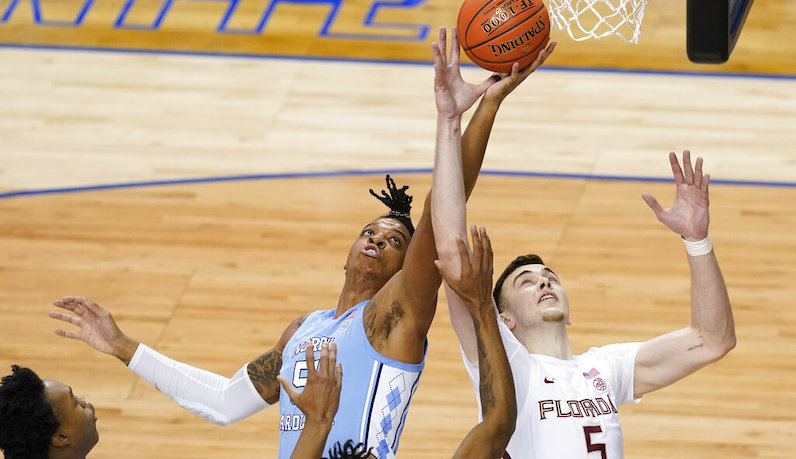Update: The 2022 ACC Tournament is set and you can view the official bracket, schedule, and TV info here.
Before you know it, the 2022 ACC Tournament for men’s basketball will be here. After back-to-back helter-skelter tournaments, both in Greensboro (sorta), the ACC Tournament returns to the Barclays Center up in Brooklyn. This was the site of the 2017 and 2018 tournaments, which were won by Duke and Virginia, respectively.
With only a few weeks left in the regular season, let’s take a look at various projections, matchup possibilities and everything else you need to know ahead of the event.
First, here are the current ACC standings:
- Duke
- Notre Dame (tiebreak)
- North Carolina
- Miami
- Wake Forest
- Virginia (tiebreak)
- Virginia Tech
- Florida State (tiebreak)
- Syracuse
- Clemson
- Louisville (tiebreak)
- Pittsburgh (tiebreak)
- Boston College
- NC State (tiebreak)
- Georgia Tech
Current Double Byes
- Duke
- Notre Dame
- North Carolina
- Miami
Projected Bracket
First Round, Tuesday, March
12 vs. 13
- Pitt vs. Boston College
- Winner plays 5: Wake Forest (Wednesday)
- Winner advances to play 4: Miami
- Game time: 2 p.m.
10 vs. 15
- Clemson vs. Georgia Tech
- Winner plays 7: Virginia Tech (Wednesday)
- Winner advances to play 2: Notre Dame
- Game time: 4:30 p.m.
11 vs. 14
- Louisville vs. NC State
- Winner plays 6: Virginia (Wednesday)
- Winner advances to play 3: North Carolina
- Game time: 7:00 p.m.

*Tiebreaker Notes, via the ACC
- When two teams are tied in the standings, regular season head-to-head results are used as the tiebreaker.
- If the tied teams played each other twice in the regular season and split their games, then each team’s record against the team occupying the highest position in the final regular-season standings (or in case of a tie for first place, the next highest position in the regular-season standings) and then continuing down through the standings until one team gains an advantage.
- When arriving at another pair of tied teams while comparing records, use each team’s record against the collective tied teams as a group (prior to their own tiebreaking procedures), rather than the performance against the individual tied teams.
- When comparing records against a single team or a group of teams, the higher winning percentage shall prevail, even if the number of games played against a team or group is unequal (e.g., 2-0 is better than 3-1; 1-0 is the same as 2-0; 2-1 is the same as 4-2; 1-0 is better than 1-1; 0-1 is the same as 0-3). If the winning percentage of the tied teams is equal against a team or group of tied teams, continue down through the standings until one team gains an advantage.
- If three or more teams are tied in the standings, the following procedure will be used:
- The combined record in conference games between the tied teams involved will be compiled. Ties will be broken and seeds assigned based on the winning percentage of the combined conference records. The higher winning percentage shall prevail, even if the number of games played against the team or group is unequal (e.g., 2-0 is better than 3-1; 1-0 is the same as 2-0; 2-0 is the same as 4-0; 2-1 is the same as 4-2; 1-0 is better than 1-1; 0-1 is the same as 0-2; 0-2 is the same as 0-4).
- If procedure (1) fails to break the tie, then each tied team’s record shall be compared to the team occupying the highest position in the final regular-season standings, continuing down through the standings until one team gains an advantage by a higher winning percentage.
- If the tie is broken by (1) or (2) regarding one or more teams, but three or more teams remain tied, then procedures (1) and (2) will be re-applied among those tied teams only.
- If two teams remain tied, procedures (a) and (b) will be followed.
Read More on the ACC Tournament
How Alondes Williams, Jake LaRavia create crunch-time offense for Wake Forest

















